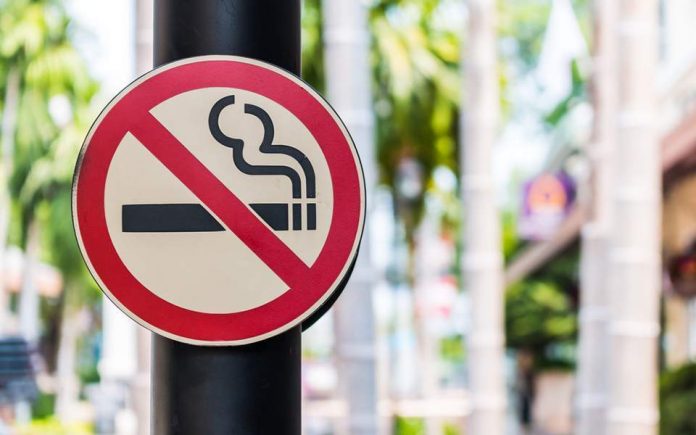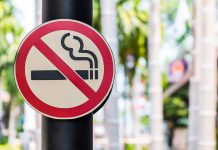This article is authored by Akash Krishnan, a law student from ICFAI Law School Hyderabad. It discusses the fundamental right of individuals to live in a clean, healthy and smoke-free environment and the prohibition on smoking in public places.
Table of Contents
Introduction
According to the World Health Organisation (WHO), tobacco consumption is one of the leading causes of death, illness and impoverishment in the world and their statistics reveal that every year there are over 8 million deaths caused due to smoking. Out of these 8 million deaths, around 1.2 million deaths are attributed to passive smoking, i.e., deaths caused due to the exposure of non-smokers to second-hand smoke.
The India Global Adult Tobacco Survey (GATS) 2016-2017 indicates that there are over 267 million tobacco users in India. According to the India Global Youth Tobacco Survey (GYTS) 2009, 30.2% of adults in India are exposed to second-hand smoke in indoor workplaces, 7.4% are exposed in restaurants, and 13.3% are exposed during public transportation. Moreover, 21% of youth aged between 13-15 are exposed to second-hand smoke in enclosed public places, and 11% are exposed at home.
The prima facie observation that can be drawn from the aforesaid statistics is that the innocent bystanders, i.e., the non-smokers are paying the price for the actions of the smokers. This raises the question that when Article 21 of the Constitution provides that no one should be deprived of living a healthy life, then why should a non-smoker be subject to the various diseases associated with tobacco consumption just because they are present in a public place?
Right to life and the right to live in a pollution-free and healthy environment
Apart from several personal rights which the Supreme Court has spelt out of Article 21, the Supreme Court has made a signal contribution to the welfare of the people by using Article 21 for the improvement of the environment.
The apex body has performed yeoman’s service by taking cognizance, in a number of cases of various environmental problems and giving necessary directions to the administration. The court has thus compelled an inactive and inert administration to make some movement towards reducing the environmental pollution. In this way, the court has promoted a broad social interest. For this purpose, it has depended upon such Directive Principles as those mentioned in Articles 47 and 48A as well as on the Fundamental Duty mentioned in Article 51A of the Constitution. In Research Foundation for Science Technology National Resource Policy v. Union of India (2005), the Supreme Court observed that the right to a healthy environment is an internationally recognised essential. It also cited the example of the Basel Convention which effectuates the Fundamental Rights guaranteed under Article 21, the right to information and the right to community participation for protection of the environment and human health.
In the case State of Madhya Pradesh v. Kedia Leather and Liquor Limited (2003), the Supreme Court held that a hygienic environment is an integral facet of healthy life and that the right to live with human dignity becomes illusory in the absence of a humane and healthy environment.
In Karnataka Industrial Areas Development Board v. Sri C. Kenchappa (2006), the Supreme Court observed that the word environment has a broad spectrum and within its ambit falls a hygienic atmosphere and ecological balance. Article 21 protects the right to life as a fundamental right and it encompasses within its ambit the enjoyment of life and the protection and preservation of the environment and an ecological balance, free from pollution of air and water without which life cannot be enjoyed.
In Subhash Kumar v. State of Bihar (1991), the Supreme Court has held that enjoyment of a pollution-free environment is included in the right to life under Article 21. The Court has observed that the right to live is a Fundamental Right under Article 21 of the Constitution and it includes the right of enjoyment of pollution-free water and air for full enjoyment of life. It further observed that if anything endangers or impairs that quality of life in derogation of laws, a recourse under Article 32 is available.
Thus, what can be observed from the aforesaid precedents is that every individual has a right to live in a pollution-free environment and that the right to a healthy and hygienic environment is an inherent feature of the right to life under Article 21 of the Constitution. Smoking in public places not only pollutes the environment but also makes it unhealthy and unhygienic for non-smokers thereby violating their basic fundamental right provided under Article 21. Thus, a ban on smoking in public places is justified and reasonable in accordance with the constitutional provisions.
Ban on smoking in public places
Landmark judgements
Once the judiciary had set its mind towards protecting the people from an unhealthy environment, it didn’t take much time for the issue of health hazards caused to non-smokers due to continuous exposure to tobacco smoke at public places to come to light. In light of the same, a Public Interest Litigation was filed in the Supreme Court of India and the landmark judgement laid down therein paved the way for laws prohibiting smoking in public places.
Murli S. Deora v. Union of India (2001)
Brief facts
In this case, a Public Interest Litigation was filed by the Petitioner highlighting the ill effects of smoking on both active and passive smokers. He further highlighted the risks faced by non-smokers and their right to life being affected by the actions of smokers smoking in public places.
Issue
Whether smoking in public places should be banned in light of the violation of Article 21 of the Constitution?
Held
- Tobacco smoking is injurious to health as it results in the consumption and release of several harmful contents like nicotine, tar, carcinogens etc. It also adds to air pollution.
- Tobacco smoking may cause cancer and other fatal diseases to mankind.
- The persons not indulging in smoking cannot be compelled to or subject to passive smoking on account of the acts of the smokers.
- The Court further directed the State and Central Governments to take actions and ensure the prohibition of smoking in the following public places:
- Auditoriums;
- Hospital buildings;
- Health institutions;
- Educational institutions;
- Libraries;
- Court buildings;
- Public offices;
- Public conveyances, including railways.
- The Court further directed the Government to ensure wide publicity of the order on the prohibition of smoking in public places and spread awareness regarding the same to the general public.
Nebu John Varghese v. P.K. Babu (1999)
Brief facts
In this case, the Petitioner was travelling in a KSRTC bus and during his journey, the driver of the bus smoked cigarettes continuously throughout the night. Following this, a few of the passengers in the bus also started smoking and therefore causing a nuisance to the petitioner and everyone else on the bus.
Issue
Whether the act of the driver who is a public servant is in violation of the ban on smoking in public places?
Held
- The action of the driver who smoked cigarettes inside the bus could not be tolerated.
- Being a public servant, it is his duty to follow and maintain a standard code of conduct which was clearly missing in this case.
- Therefore, the driver is in violation of the order prohibiting an act of smoking in a public place.
- A fine of Rs. 1000/- was imposed vicariously on KSRTC and the Respondent was sentenced to imprisonment for one day.
These precedents, among others, indicated the need for legislation that explicitly prohibited smoking in public places. This call was answered in 2003 with the enactment of the Cigarettes and Other Tobacco Products (Prohibition of Advertisement and Regulation of Trade and Commerce, Production, Supply And Distribution) Act, 2003. Let us now discuss the provisions of this Act that banned smoking in public places.
Cigarettes and Other Tobacco Products (Prohibition of Advertisement and Regulation of Trade and Commerce, Production, Supply And Distribution) Act, 2003
Section 4 of the Act states that no person shall smoke in any public place. It also provided for the establishment or creation of a designated smoking area/space in hotels having 30 rooms or more, in restaurants having a seating capacity of more than 30 and in the airports. States like Gujarat, Maharashtra and Rajasthan took a step further and placed a prohibition on the establishment and running of hookah bars in any place where food or refreshment of any kind was sold for consumption.
Section 21 of the Act established a fine of Rupees 200/- for smoking in public places and made smoking in public places a compoundable offence that was to be tried by courts by exercising their summary jurisdiction.
However, what was peculiar under this Act was that firstly the legislature had failed to provide a definition for the term public place and secondly, the provision lacked an enforcement mechanism. Due to both these inherent flaws, even though the legislature had attempted to take a step in the right direction, it had lost its way. The call for specific legislation prohibiting smoking in public places was answered through the enactment of the Prohibition of Smoking in Public Places Rules, 2008. Let us now discuss the provisions of these Rules in detail.
Prohibition of Smoking in Public Places Rules, 2008
Rule 3 explicitly prohibits smoking in a public space. It lays down the following duties and responsibilities on the owners, proprietors, managers, supervisors or any other person who is in charge of the affairs of a public place.
- Ensure that nobody is allowed to smoke in public places.
- They should place a board with the sign “No smoking area-smoking here is an offence” at every entrance, different floors, stairways, lifts etc.
- They should not provide any equipment like ashtrays, lighters etc that may facilitate smoking in public places.
- A Notice/Sign should be in place that specifies whom to approach and file a complaint with if anyone is found smoking in public places.
This Rule not only places an obligation on the aforesaid stakeholders to prohibit smoking in public places but also holds them liable to the same extent as the smoker if they fail to take appropriate actions on any violation caused by the smoker.
Rule 4 provides for the establishment or creation of a designated smoking area/space in hotels having 30 rooms or more, in restaurants having a seating capacity of more than 30 and in the airports. It lays down the following guidelines for the establishment of smoking areas:
- It should not be established at any of the designated entry or exit points.
- It should be marked with a sign “Smoking area”.
- No other services shall be provided in the smoking area.
- Smoke emerging from such rooms should be ventilated outside and should not enter into the non-smoking areas.
Though these Rules also failed to define public places, it is a step in the right direction when it comes to enforcement of the ban on smoking in public places. Powers have been given to different stakeholders and the key factor that would determine the success of these rules would be how these stakeholders perform their roles to ensure that there is no violation of the rules. Since the legislature has time and again failed to define the scope of the term public place, the scope as defined in the case of Murli S. Deora is followed to date.
How can proper enforcement of these laws be ensured
- The Rules should be given wide publicity through all forms of communication so that everyone is aware of the existence of these rules and follows them accordingly.
- Special police units should be set up for the purpose of monitoring and enforcing the Rules.
- A helpline number could be set up for reporting such cases. In furtherance of the same, a National helpline number was set up in 2014. People could now report complaints regarding smoking in public places by dialling 1800-110-456. Also, a mechanism for online reporting could be set up.
- Collaborations with NGOs and community groups could help increase awareness at a local level.
- Increase the fine from the meagre amount of Rs. 200. The fear of higher fines could act as a factor that discourages acts of public smoking. Notably, the Jharkhand Government is planning to increase the fine to Rupees 1000/- for smoking in public places.
- Increase the punishment for repeat offenders. This increased punishment could also include imprisonment for short durations.
- Set up signboards and CCTV cameras in all public places for increasing awareness and facilitating constant monitoring.
- Allow the Police Officers/Authorised Officers to collect fines on the spot instead of waiting for the summary trial. This could ensure speedy disposal of such issues.
- Including a warning against smoking in public places in the cigarette box itself.
- Sensitise, train and empower the owners, proprietors, managers, supervisors or any other person who is in charge of the affairs of a public place so that they can take immediate and effective measures against any form of violation of the rules.
Conclusion
Diseases caused by second-hand smoke kill almost 65,000 children each year globally. Infants face the risk of sudden infant death syndrome and it also causes complications in pregnancy.
Smoking is a private choice made by any individual and such activities should therefore be limited to private spaces only. No person should suffer because of the private choices and way of life of another person. Therefore, when it comes to a public sphere, any act that violates the rights of another person should be prohibited.
The right to a safe and healthy environment is a fundamental right recognised under Article 21 of the Constitution. This right coupled with the right of non-smokers to protect themselves from the harmful effects of passive smoking makes it the responsibility of both the judiciary and the legislature to protect non-smokers against any harm. They have the right to clean and fresh air and no individual can take it away from them and thus, a complete ban on smoking in public places is an absolute necessity.
References
- http://www.tobaccopreventioncessation.com/Awareness-and-compliance-to-anti-smoking-law-in-South-Bengaluru-India,76549,0,2.html
- https://www.iitk.ac.in/doip/data/COTPA/Guidance_COTPA.pdf
- https://www.who.int/newsroom/factsheets/detail/tobacco#:~:text=Tobacco%20kills%20more%20than%208,%2D%20and%20middle%2Dincome%20countries.
- https://www.who.int/india/healthtopics/tobacco#:~:text=Nearly%20267%20million%20adults%20(15,quid%20with%20tobacco%20and%20zarda.
- https://www.tobaccocontrollaws.org/legislation/country/india/summary
LawSikho has created a telegram group for exchanging legal knowledge, referrals and various opportunities. You can click on this link and join:
https://t.me/joinchat/J_0YrBa4IBSHdpuTfQO_sA
Follow us on Instagram and subscribe to our YouTube channel for more amazing legal content.
 Serato DJ Crack 2025Serato DJ PRO Crack
Serato DJ Crack 2025Serato DJ PRO Crack










 Allow notifications
Allow notifications



